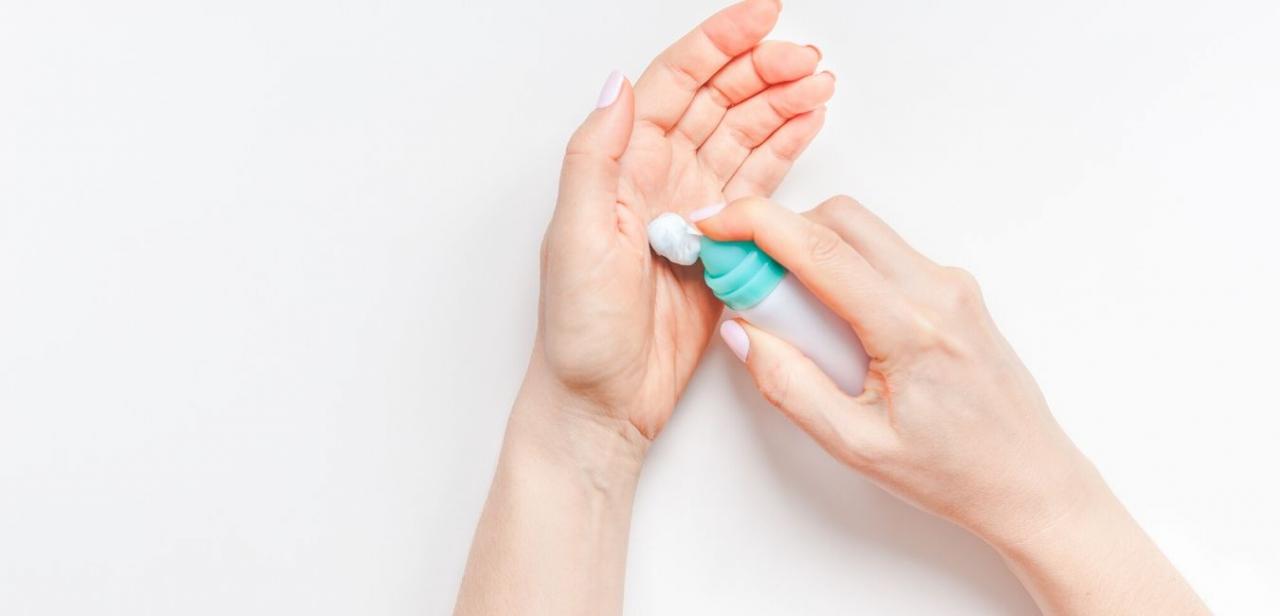 Auremar/PhotoSpin
Auremar/PhotoSpin
Hand rashes can be as frustrating to get rid of as they are to get. Some common causes of hand rashes, also known as hand dermatitis, are discussed in my previous article.
Regardless of the cause of the hand rash, the first action to take is to eliminate triggers that cause the rash.
If you have irritant or allergic contact dermatitis, try and determine what substance may be the culprit. If nothing seems to come to mind, then your hand rash may simply be related to excessive washing of your hands.
One way to reduce exposure of your hands to water is to only wash your palms. Use a mild soap and follow with a good moisturizer after every wash.
Wear gloves while performing various tasks to reduce getting your hands dirty. Let the gloves get dirty instead. Have a few pairs so that they can dry out in between uses or use disposable ones.
Gloves should always be worn to protect your hands from chores using irritating chemicals.
Choose plastic or vinyl gloves since rubber or latex can cause an allergic response.
Cotton liners can be worn as absorbent liners under waterproof gloves or worn as general protectors during everyday activities. Wash these gloves frequently.
Applying a thick ointment then wearing cotton gloves at night while you sleep can help re-moisturize the skin on your hands. Sometimes using an over-the-counter steroid may help particularly irritated areas.
Protect your hands from cold, dry air and wind.
Keep protecting your hands for four months after they have healed.
If the hand rash does not improve after trying the above steps then it is time to see a dermatologist.
Dr. Sunil Sharon Dhawan, a dermatologist affiliated with the Dermatology Department at Stanford School of Medicine, indicated in my previous article that sometimes resistant hand rashes may really be a combination rash of more than one problem, or it can be difficult to tell what the cause actually is.
Dhawan said that sometimes scrapings, cultures, patch tests or biopsies may be needed to determine the cause. In cases of fungal infections, often there is an infection elsewhere in the body, which the doctor will determine.
Topical treatments may be used, such as prescription strength steroids or topical immunomodulators like Protopic and Elidel for certain cases. Dhawan sometimes prescribes oral steroids.
The American Osteopathic College of Dermatology (AOCD) described the use of ultraviolet light (UV) for severe cases of hand dermatitis. Psoralen can be applied topically before exposing the skin to UV light, which will make the skin more sensitive to the light.
Dr. Dhawan said topical UV with Psoralen works well for treating psoriasis and atopic dermatitis (eczema).
These more involved treatments are usually combined with the basic treatments discussed above, but more intensive moisturizers and emollients may be used.
Sources:
Hand Rashes. American Osteopathic College of Dermatology. Retrieved Dec. 21, 2012.
http://www.aocd.org/skin/dermatologic_diseases/hand_rashes.html
HAND DERMATITIS, OR MY HANDS ARE KILLING ME! By Dr. Sunil Sharon Dhawan. National Eczema Association. Retrieved Dec. 21, 2012.
http://www.nationaleczema.org/living-with-eczema/hand-dermatitis-or-my-h...
The Bottomline: Hand Rashes. Dermatology Advice By Dr. Peter Saitta. Retrieved Dec. 21, 2012.
http://drpetersaitta.com/2012/08/03/the-bottomline-hand-rashes
Michele is an R.N. freelance writer with a special interest in woman’s healthcare and quality of care issues. Other articles by Michele are at www.helium.com/users/487540/show_articles
Edited by Jody Smith





Add a CommentComments
There are no comments yet. Be the first one and get the conversation started!